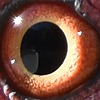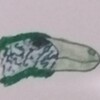HOME | DD
 TheBootesArtVoid — The Eye Of The Komodo Dragon (enclosure)
TheBootesArtVoid — The Eye Of The Komodo Dragon (enclosure)

#animal #animalphotography #animals #dragon #dragons #eye #eyes #komododragon #lizard #lizards #natural #nature #naturephotography #photo #photography #photographyanimals #photographynature #photographyphoto #photos #wildlife #wildlifephotography #komodo_dragon #wildlifereferencephoto #thebootesartvoid #closeup #closeupphotography
Published: 2022-04-25 05:58:19 +0000 UTC; Views: 15198; Favourites: 150; Downloads: 0
Redirect to original
Description
Species Name: Komodo Dragon
Species Latin Name: Varanus komodoensis
Also Known As: Komodo Monitor
Native To: The Indonesian islands of Komodo, Flores, and Gili Motang
Conservation Status: Vulnerable
Photo Taken At: Ballarat Wildlife Enclosure
Size (length): 2.3-2.6 meters (90 – 103 inches)
Weight: 68-91kg (149.9 – 200.6 pounds)
Top Speed: 20kmh (12.4mph)
Lifespan: 30 years
Population Size: 3,014
Diet: Carnivore, scavenger
Lifestyle: Terrestrial, ambush predator, precocial, burrowing, arboreal, island endemic, oviparous, apex predator
Group Name: Lounge
Baby Name: Baby Komodo Dragons, Komodo Dragon younglings, young Dragons, hatchlings
Mating Behaviour: Monogamy
Reproductive Season: May-August
Pregnancy Duration: 8 Months
Incubation Period: 7-8 months
Eggs Per Clutch: 20 Eggs
Independent Age: At birth
Age of Sexual Maturity: 8-9 years of age
Description:
Komodo Dragons are the largest and heaviest lizards in the world, the largest recorded wild specimen was 3.13 meters (10.3 feet) long and weighed 166kg (366 pounds). The juveniles of this species will be coloured green, yellow, and red with black bands. This brighter colouration will fade with age as the adults have a more uniform gray colouration with their rough scales. They have strong limbs and a strong muscular tail, their heads have a rounded snout with ear openings. They have 60 serrated teeth that can measure up to 2.5cm (1 inch) in length which can frequently replaced. They have long forked tongues and their saliva is often tinged with blood as their teeth are usually covered by gingival tissue, this tissue is frequently lacerated naturally when feeding.
Diet:
These animals diet will consist mostly of meat from animals that have already died, that said it is not uncommon for these animals to attack and eat a variety of large prey. When a Komodo Dragon does decide to attack a living animal it will prefer to lie in ambush. When an animal enters the ambush site the Komodo Dragon will charge at their prey at high speed aiming for the neck. Generally these animals do not try to let their prey go, they will try to kill their prey outright using a combination of laceration of damage and blood loss. There have been recorded cases of these animals successfully taking down and killing wild pigs within seconds. There are cases where Komodo Dragons will chase their prey for long distances until their prey is unable to continue, in these cases it is likely their prey escaped an initial attack but later succumbed to venom/infection of the Komodo Dragon Bite.
Komodo Dragons will feed on various large prey such as goats, deer, wild boar, horses, water buffalo, and smaller Komodo Dragons. The saliva in their bite contains a variety of highly septic bacteria that helps bring down their prey. Research suggests that the septic bacteria found is naturally occurring that is likely to be found in other predator animals. Despite common conception Komodo Dragons practice good mouth hygiene after a meal, they will often spend up to 10-15 minutes licking at their own mouths to ensure it is clean. It is believed that the bite of a Komodo Dragon is slightly venomous, symptoms believed to range from rapid swelling, localized disruption of blood clotting, and pain lasting for several hours should the victim survive the Komodo Dragons bite. Further research indicates that the effect of the venom could also cause general inhibition of blood clotting, lowering of blood pressure, muscle paralysis, and the induction of hypothermia which would lead to shock and loss of consciousness for the victim. This has led to some dispute as to whether or not the bacteria or the venom of a Komodo Dragons bite plays more of a role when taking down its prey.
These animals will tear apart their prey using their serrated teeth and swallow chunks whole, they will generally most of the carcass leaving little waste behind. The juveniles will feed on grasshoppers, beetles, small geckos, eggs, birds, and eventually small mammals. Although the Komodo Dragon can see up to 300 meters using its eyes, its vision at night is not very good. As such its main method of detecting prey animals is with the use of its forked tongue as a scent detector.
Behaviour:
Komodo Dragons are generally rather solitary in nature and will generally only gather to mate or to eat. They are generally most active during the day but there are cases when they can be active during the night as well. They prefer hot and dry climates such as open grasslands, Savanna's or tropical forests at low elevation. These animals are capable of using their sharp claws and strong legs to create burrows for shelters, these holes can measure from 1-3 meters (3.3 – 9.8 feet) wide. Komodo Dragons will use these burrows as a place to rest and sleep during the night, the burrows will effectively conserve their body heat and minimize the period of time required to bask in the sun during the morning. After they are done basking they will typically seek shelter from the peak of the heat, they will then spend their afternoon hunting for the majority of their food. These animals will mark special resting places with dropping and will also clear the areas of vegetation, this allows the resting spots to double as ambush locations should any prey animals get too close as they rest.
Komodo Dragons can form monogamous pairs which is quite rare for lizard species, they are also noted in captivity to understand and participate in non food related play behaviour. Even though these animals can form monogamous pairs it appears that generally they will polygynandrous mating system. Mating occurs between the months of May and August, the males will fight over females and territory during this time. The males will grapple one another as they stand on their hind legs using their muscular tail as support, with the loser eventually being pinned to the ground. The males may vomit or defecate when preparing to fight, the winner of the fight will then flick his long tongue at the female to gain information on how receptive she may be to mating.
During the mating process itself the females are generally antagonistic towards the males advances, she will resist the early advances of the male retaliating with her teeth and claws. The male will try to court the female by rubbing his chin on her head, scratching her back, and licking her body. If the female gives in and decides to mate with the male she will lick him back, he will then grasp her with his claws and lift her tail with his before proceeding with mating. The females will lay their eggs from the months of August to September. They will make many camouflaged nests or holes to prevent the eggs from being eaten by other Komodo Dragons. Clutches of eggs will typically contain 20 eggs and will be incubated by the mother for 7-8 months. Although the young are independent at birth they are born quite vulnerable to predation. The hatching process is quite exhausting for them as they use a birthing tooth to break out of the egg, they will then spend hours resting at the nest site before moving on. The juveniles will spend the most of their time in trees where they will be relatively safe from predators. Komodo Dragons become re-productively mature at around 8-9 years of age.
Threats
As Komodo Dragons are apex predators they generally do not get preyed on as adults. When these animals are smaller juveniles and their scales have yet to fully develop they are vulnerable to larger mammals and predatory birds. Adults of this species have been known to eat juveniles of the same species. This species are most vulnerable to being hunted/pouched from humans.
The primary threats these animals face are due to volcanic activity, earthquakes, fire, and loss of habitat due to previously mentioned factors as well as human expansion. One of the other main factors that contribute to their loss of numbers is poaching from humans, the poaching targeting prey animals reduces the Komodo Dragons ability to find food. This species themselves are also subject to being poached directly which has resulted in a further decline in their numbers.
These animals have been recognized as a vulnerable species and are protected. The act of poaching the Komodo Dragons has been made illegal but despite that there are still reports that confirm that the act still happens every now and then. The numbers of these animals have dropped from 3,222 in 2013 down to 3,014 in 2015, it is unlikely to know whether or not the numbers of this species will improve in the future.
Although Komodo Dragons are highly sought after at various zoo's and sanctuaries they are particularly rare as these animals are susceptible to various diseases when taken out of the wild. These animals are generally not aggressive towards humans in the wild or in captivity but they have been known to lash out in unpredictable ways towards those they deem to be encroaching on their territory. Unfortunately Komodo Dragons do not appear breed well in captivity either so it seems unlikely captive breeding programs will be successful to replenish their numbers in the wild.
Further Reading (general information):
Wikipedia: en.wikipedia.org/wiki/Komodo_d…
Animal Diversity: animaldiversity.org/accounts/V…
Kidadl: kidadl.com/animal-facts/komodo…
Animalia: animalia.bio/komodo-dragon
Animal Corner: animalcorner.org/animals/komod…
Related content
Comments: 12

👍: 1 ⏩: 1

👍: 0 ⏩: 0

👍: 1 ⏩: 1

👍: 1 ⏩: 0

👍: 1 ⏩: 1

👍: 0 ⏩: 0

👍: 1 ⏩: 1

👍: 1 ⏩: 1

👍: 1 ⏩: 1

👍: 1 ⏩: 0

👍: 1 ⏩: 1

👍: 0 ⏩: 0


























